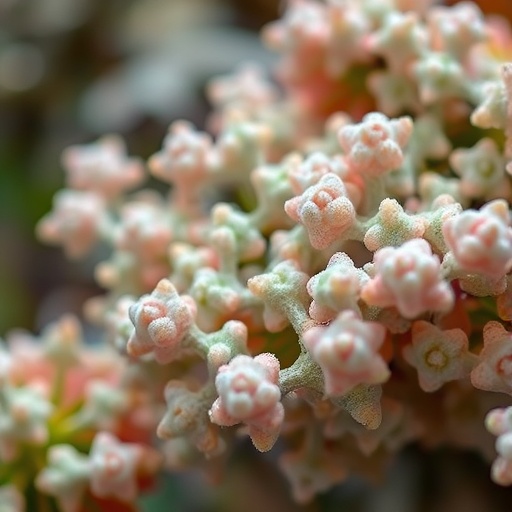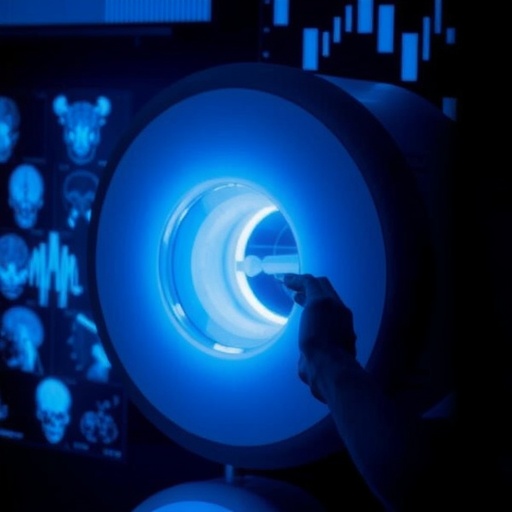Revolutionizing Biomedical Applications: The Role of Marine Actinobacterium in Nano-Selenium Synthesis
Recent advancements in biotechnology have opened thrilling avenues for research and application in various fields, particularly in medicine and environmental sustainability. One of the standout developments comes from a study involving the marine actinobacterium Streptomyces vinaceusdrappus. This organism has demonstrated remarkable capabilities in mediating the biosynthesis of nano-selenium, a process that could have profound implications in the realms of biomedical science and therapeutics.
The significance of selenium cannot be overstated. This essential trace element plays a crucial role in numerous biological processes, including antioxidant defenses, thyroid hormone metabolism, and immune function. However, the application of selenium in a nanoparticle form has recently gained momentum due to its enhanced bioavailability and therapeutic efficacy. The research orchestrated by Ghareeb, Fouda, and Kishk sheds light on how S. vinaceusdrappus facilitates this transformation, offering a sustainable and efficient alternative to conventional methods of selenium production.
Utilizing natural sources for nano-selenium synthesis presents a significant advantage over synthetic routes, which often involve toxic chemicals and complex methodologies that are not eco-friendly. The findings from this recent publication showcase that Streptomyces vinaceusdrappus can convert selenite ions into bioactive nano-selenium under eco-friendly conditions, promoting sustainable practices that can resonate across all stages of biomedical applications, from research to potential clinical therapies.
The biosynthesis of nano-selenium through this marine actinobacterium involves a series of metabolic pathways. As the organism metabolizes the selenite ions, it leads to the production of nanoscale selenium particles that exhibit unique physicochemical properties. This transformation is not only crucial for creating a less toxic alternative but also enhances the bioactivity of the selenium nanomaterials, increasing their efficacy as therapeutic agents.
Moreover, this nano-selenium exhibits various biomedical activities, ranging from antimicrobial effects to antioxidant properties. The study reported that nano-selenium derived from S. vinaceusdrappus has substantial potential in combatting resistant strains of bacteria, which is a growing concern in modern medicine. This antimicrobial action stems from the unique surface characteristics of the selenium nanoparticles produced, which can effectively disrupt bacterial cell walls, leading to cell death.
Antioxidant properties are another significant aspect of nano-selenium, which can neutralize reactive oxygen species (ROS) that are implicated in numerous chronic diseases, including cancer and cardiovascular conditions. The incorporation of nano-selenium into therapeutic strategies could enhance the efficacy of treatments by mitigating oxidative stress, thereby providing a multi-faceted approach to disease management and health promotion.
In addition to antioxidant and antimicrobial properties, the unique biocompatibility of nano-selenium has shown promising results in various biological applications, including drug delivery systems. By encapsulating therapeutic agents in selenium nanoparticles, researchers aim to improve bioavailability and targeted delivery of drugs to specific tissues or cells, which can revolutionize treatment protocols for complex conditions.
The use of marine actinobacteria like S. vinaceusdrappus in synthesizing nano-selenium is particularly noteworthy due to the vast untapped potential these organisms harbor. As marine ecosystems are rich in biodiversity, they could provide a reservoir of novel compounds and insights into biological materials for therapeutic innovation. The exploration of these marine microbial sources could unlock new pathways for the development of more effective and safer medical treatments.
As the research continues, it becomes increasingly evident that the integration of microbiology and nanotechnology could redefine our approach to health and disease prevention. The ability to harness the natural capabilities of marine actinobacteria not only enriches our understanding of biological processes but also positions these organisms as pivotal players in the future of sustainable biomedical sciences.
Furthermore, the implications of this research extend beyond the laboratory. In an era where environmental sustainability and health interventions are more critical than ever, the biosynthesis of nano-selenium from S. vinaceusdrappus offers a model for how we can responsibly utilize nature to address pressing global health issues. This approach not only minimizes waste and environmental impact but also emphasizes the importance of tapping into biological processes as a means to enhance human health.
With the publication of these findings in BMC Complementary Medicine and Therapies, the scientific community is encouraged to further explore the potential of marine-derived biomaterials. Collaborative research efforts across disciplines will be paramount in realizing the full spectrum of benefits that can stem from the innovative applications of nano-selenium in medicine.
As we delve deeper into the biochemistry of Streptomyces vinaceusdrappus, it remains to be seen how these discoveries will influence future therapeutic landscapes. The convergence of biotechnology, marine biology, and nanomedicine heralds a new age of tailor-made medical solutions that align with the principles of sustainability and efficacy, paving the way for exciting developments in human health.
In conclusion, the research surrounding Streptomyces vinaceusdrappus and its role in nano-selenium biosynthesis is not merely an academic exercise; it is a cornerstone of a transformative movement in biomedical science. The potential applications of this work could empower both present and future generations to combat diseases more effectively while maintaining stewardship of our planet’s resources. It is an invitation for researchers worldwide to reflect on the synergy between nature and technology and to act on the opportunities it provides.
With a growing focus on biocompatibility, eco-friendliness, and the efficacy of treatments, the intersection of marine microbiology and nanotechnology presents an inspiring frontier for future studies and discoveries. The journey into this promising domain of research has only just begun, with a vast reservoir of opportunities waiting to be explored in the quest for solutions to health challenges globally.
Subject of Research: The biosynthesis of nano-selenium using the marine actinobacterium Streptomyces vinaceusdrappus and its biomedical applications.
Article Title: Marine actinobacterium Streptomyces vinaceusdrappus mediated nano-selenium: biosynthesis and biomedical activities.
Article References:
Ghareeb, A., Fouda, A., Kishk, R.M. et al. Marine actinobacterium Streptomyces vinaceusdrappus mediated nano-selenium: biosynthesis and biomedical activities.
BMC Complement Med Ther 25, 329 (2025). https://doi.org/10.1186/s12906-025-05073-9
Image Credits: AI Generated
DOI: 10.1186/s12906-025-05073-9
Keywords: Nano-selenium, Streptomyces vinaceusdrappus, biosynthesis, biomedical activities, marine actinobacteria, sustainability, antimicrobial properties, antioxidant effects, drug delivery systems.
Tags: antioxidant properties of seleniumbiomedical implications of seleniumbiotechnological advancements in medicineEco-friendly nanoparticle synthesisimmune system benefits of seleniummarine actinobacterium applicationsnano-selenium biosynthesisnatural sources for nanoparticle synthesisStreptomyces vinaceusdrappussustainable selenium productiontherapeutic efficacy of nano-seleniumthyroid hormone metabolism





